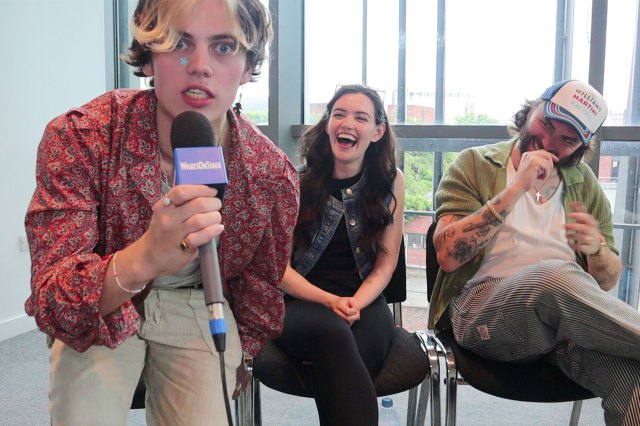Let's Talk About Sets: Alex Lowde on Pygmalion
The designer explains his unusual take on the staging of George Bernard Shaw’s classic play
Working closely with director Sam Pritchard, we've sought to navigate an alternative path within the established visual language of Pygmalion, much of which is derived from the musical adaptation. If you strip away the familiar visual associations of Edwardian London, the premise of Shaw’s two main characters hasn’t shifted that much. People still sell their flowers at traffic junctions and people still make sounds in their back bedrooms.
Collaborating with the sound designers Ben and Max Ringham we’ve created a lab in which the actors experiment with sound. All the equipment of Higgins’ sonic experiment is visible and declared within the set. Microphones, megaphones, voice modulators, speakers, sound booths and subtitling all feature. It becomes a testing ground for Eliza as she embarks on a series of trials. Each act has a slightly different visual identity and style.
In the opening street scene we see the characters on the periphery of the playing space. They are literally shut out of the main environment, beyond which exists a space of privilege which only certain characters can access. In Shaw’s original the street is crowded, dark and wet. For us it’s a gutter strewn with vegetable matter where Eliza is continually referred to by Higgins as a cabbage.
As we transition into the world of Higgins' lab we see a light lofty space that affords its inhabitants the space for thought, contemplation and creativity. Whilst Mrs Higgins' House is another audio testing ground.
Released from her endemic environment Eliza is allowed to move upwards through a social strata. Through a process of hot housing and manipulation she appears transformed from her original vernacular. The set therefore represents a succession of experiments. Working through each test until she reaches a point of exhaustion, Eliza feels stripped of one identity and unable to fully inhabit another.
The design also attempts to explore the fusion of the technological with the organic through the juxtaposition of technological kit against a repeated natural motif – Nature versus Nurture. In each scene we have a different manifestation of some natural form, ranging from printed wallpaper to the unsustainable blooms of Mrs Higgins' tropical hot house.
Shaw's notes for the staging at the start of act one he describes how 'a complete representation of the play as printed for the first time is technically possible only on the cinema screen or on stages with exceptionally elaborate machinery’. Working with the video designer Will Duke and film maker Geej Ower we set out to film all the interludes Shaw describes and integrate them into the drama as separate interludes between the acts. We see the projection of the pre-recorded interludes onto the plywood frame of the structure. It is through the film we seek to create the myopic, socio-realistic details of the outside world, Eliza’s bedsit, the ball, the street corner where Freddy waits outside her window.
By Alex Lowde
Pygmalion runs at West Yorkshire Playhouse from 8 to 25 February and then tours the UK.












